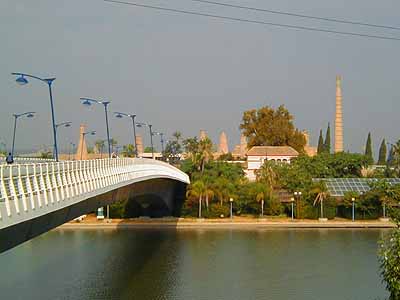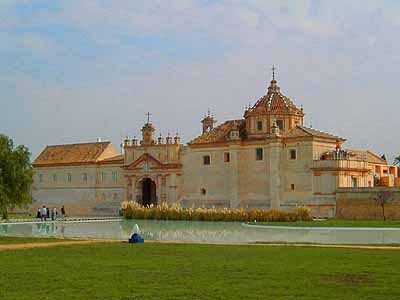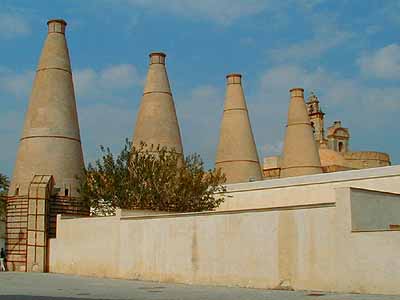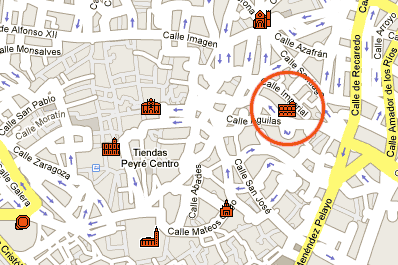
Coming from the center, pedestrians can take the Pasarela bridge
In 1810, during the invasion of Napoleon's troops, the monks were driven out of the monastery and it was taken over by the French soldiers as the military barracks.

Rests of the monastery
Abandoned and damaged, the monastery was bought over in 1839 by the English merchant, Charles Pickman, who would set up an earthenware and porcelain factory in 1841.

Chimney stacks and Kilns
Numerous Chimney stacks and Kilns were constructed, five of which still remain to thence determine the aesthetic characteristics of the monastery. The factory continued active at the site up till 1982.
Today the Cartuja hosts the Museum of Contemporary Andalusian Art.
Location
Located on the Cartuja Island within the 92 Expo grounds.
See the monument on interactive map
Christopher Columbus lived in the Cartuja monastery for several years. This fact influenced the decision, that the Cartuja peninsula would be the site of the 1992 World Exhibition (22) Expo '92.
| Main Page | Apartments | Hotels | Hostels | Activities | Monuments | Sevilla Info | City Map |